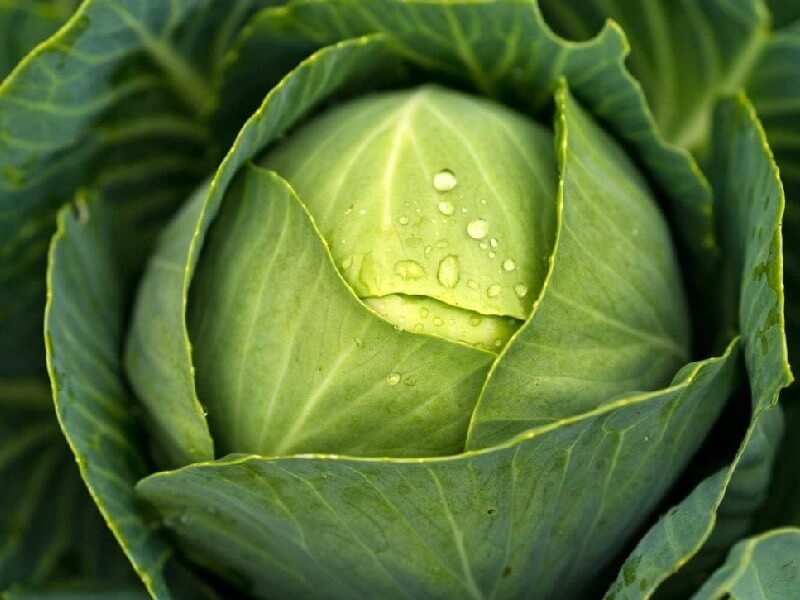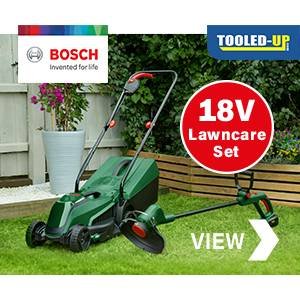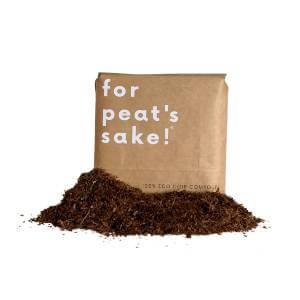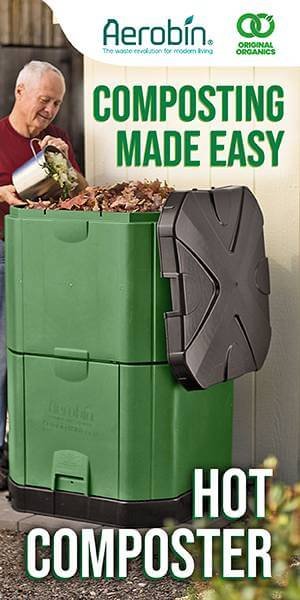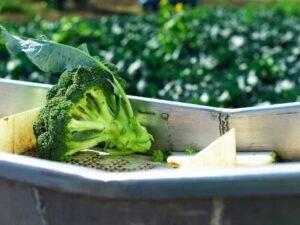Growing your own vegetables is not only a great way to save money but is also a fantastic way to ensure that your food is free of harmful chemicals and as fresh as possible. Cabbages are a popular vegetable that are versatile, delicious and can grow very well in the UK climate. With a little bit of effort and patience, you can grow your own fresh cabbages in your own garden. In this article, we will guide you through the process of selecting the right cabbage variety for your garden, preparing the soil, planting, caring for and harvesting your cabbages. With our tips, you’ll be on your way to growing your own tasty, vibrant, and healthy cabbages in no time.
Choosing the Right Cabbage Variety
When it comes to growing cabbages in the UK, choosing the right variety is essential. There are several types of cabbages to choose from, each with its own unique characteristics and optimal growing conditions. Here are a few popular cabbage varieties that thrive in the UK:
- January King: This variety is known for its beautiful purple and green leaves and its ability to withstand cold temperatures, making it a great choice for winter harvesting.
- Savoy Cabbage: With its crinkled, dark green leaves, Savoy cabbage is a classic favourite. It has a sweet flavour and is perfect for both cooking and using raw in salads.
- Hispi Cabbage: Also known as sweetheart cabbage, Hispi cabbage has a tender texture and a mild, delicate flavour. It is quick to mature and can be harvested early in the season.
- Red Drumhead: As the name suggests, this cabbage variety has a stunning red-purple colour and a round shape. It adds a vibrant touch to any dish and is ideal for sautéing or coleslaw.
When selecting your cabbage variety, consider factors such as the duration of the growing season, resistance to pests and diseases, and the taste and texture preferences you have. Research the specific requirements of each variety, including sun exposure, soil pH, and spacing, to ensure the best results in your garden.
In the next section, we will go over the essential steps to prepare the soil and create an optimal growing environment for your cabbages.
Preparing the Soil and Creating an Optimal Growing Environment
To give your cabbages the best chance of success, it’s crucial to prepare the soil properly and create an optimal growing environment. Follow these steps to ensure healthy and thriving plants:
- Choose a Sunny Location:
Cabbages thrive in full sun, so select a location in your garden that receives at least six hours of direct sunlight each day. Avoid areas that are shaded or prone to water-logging, as these conditions can hinder growth and increase the risk of diseases.
- Test and Amend the Soil:
Before planting your cabbages, it’s beneficial to test the soil pH and nutrient levels. Cabbages prefer a slightly acidic soil with a pH range between 6.0 and 6.8. If the soil pH is too high, add organic matter like compost or well-rotted manure to lower it. Additionally, enrich the soil with balanced fertiliser or specific nutrients, such as nitrogen, phosphorus, and potassium, as needed.
- Clear and Prepare the Bed:
Clear the chosen area of any weeds, rocks, or debris. Remove any roots or large stones that may hinder root growth or interfere with the planting process. Loosen the soil using a garden fork or tiller to a depth of about 12 inches, ensuring good aeration and drainage.
- Mulch and Moisturise:
Apply a layer of organic mulch, such as straw or wood chips, around your cabbage plants. Mulching helps retain soil moisture, suppress weeds, and regulate soil temperature. Ensure consistent moisture levels by watering deeply and regularly, especially during dry periods. Avoid overwatering, as excessive moisture can lead to root rot and other fungal diseases.
- Proper Spacing:
Cabbages require adequate spacing to promote air circulation, minimise competition for nutrients, and prevent disease spread. Follow the spacing recommendations for your specific cabbage variety, typically 18-24 inches between individual plants and 2-3 feet between rows.
By following these steps and creating an optimal growing environment, you’ll give your cabbages the best chance to flourish. In the next section, we’ll delve into the essential care and maintenance tasks necessary for healthy cabbage growth.
Care and Maintenance for Healthy Cabbage Growth
Cabbages require proper care and maintenance throughout their growing season to ensure healthy growth and a bountiful harvest. Here are some essential tasks to keep in mind:
- Watering:
Water your cabbage plants regularly, providing them with about 1-1.5 inches of water per week. Ensure that the soil remains consistently moist, but avoid overwatering, as this can lead to root rot and other water-related diseases. Water deeply at the base of the plant, rather than overhead, to prevent leaf diseases. Consider using a drip irrigation system or a soaker hose for efficient and targeted watering.
- Fertilisation:
Cabbages are heavy feeders, meaning they require regular fertilisation to thrive. Apply a balanced fertiliser or compost every 3-4 weeks to provide the necessary nutrients. Be cautious not to over-fertilise, as excessive nitrogen can promote leafy growth at the expense of head formation. Follow the instructions provided by the fertiliser manufacturer to ensure proper application rates.
- Weed Control:
Keep the cabbage bed free from weeds, as they compete for nutrients, water, and light. Regularly check for weeds and remove them by hand, taking care not to disturb the shallow cabbage roots. Mulching can help suppress weed growth, but be diligent in monitoring and removing any persistent weeds that may emerge.
- Pests and Disease Management:
Cabbages are prone to various pests and diseases, such as cabbage worms, aphids, flea beetles, and clubroot. Inspect your plants regularly for signs of infestation or disease. Employ preventive measures like companion planting, crop rotation, and using protective barriers or row covers to deter pests. If necessary, consider organic pest control methods or consult with a gardening professional for appropriate treatments.
- Harvesting:
Cabbages are typically ready for harvest when the heads feel firm and solid. Depending on the variety, this can take anywhere from 70 to 100 days after transplanting. Use a sharp knife to cut the cabbage head at the base, leaving a few outer leaves intact to protect the head during storage. Harvest early in the day for the best quality and flavour.
By following these care and maintenance guidelines, you’ll provide your cabbage plants with the necessary care and attention to ensure healthy growth and a rewarding harvest. In the next section, we’ll discuss some common issues that may arise during the cabbage-growing process and how to address them.
Common Issues and Troubleshooting
While growing cabbages can be rewarding, there are some common issues that may arise during the process. Here are a few problems you may encounter and how to troubleshoot them:
- Cabbage Worms:
Cabbage worms, including the imported cabbage worm and the cabbage looper, can be a common pest that damages cabbage leaves. To control these worms, manually remove them from the plants, applying organic insecticides like Bacillus thuringiensis (Bt) if necessary. Implementing row covers or planting companion crops that repel cabbage worms, such as thyme or mint, can also be effective.
- Aphids:
Aphids are small, soft-bodied insects that can infest cabbage plants and cause leaf distortion and yellowing. To control aphids, spray a strong stream of water on the affected plants to dislodge them. Alternatively, use insecticidal soap or neem oil, following the instructions on the product. Introducing natural predators, such as ladybugs or lacewings, can also help keep aphid populations in check.
- Clubroot:
Clubroot is a soil-borne disease that causes the roots of cabbage plants to become swollen and deformed. To prevent clubroot, practice crop rotation, avoid planting cabbages in the same location year after year. If clubroot is detected, remove infected plants and dispose of them properly. Consider amending the soil with lime or sulfur to adjust the pH and inhibit the disease’s growth.
- Splitting Heads:
Cabbage heads may sometimes split or crack. This usually occurs due to excessive rainfall or rapid changes in moisture levels. To prevent splitting, ensure consistent soil moisture by providing regular irrigation. Harvesting cabbage heads promptly when they reach the desired size can also prevent splitting.
- Yellowing Leaves:
Yellowing leaves can be a sign of nutrient deficiencies, such as nitrogen or iron. Apply a balanced fertiliser or specific nutrient supplements as needed to address the deficiency. Keep in mind that yellowing leaves can also be caused by overwatering or disease, so it’s important to assess the conditions and address any underlying issues.
By being observant and addressing these common issues promptly, you can help ensure the health and vigor of your cabbage plants. Remember that prevention and early intervention are key to successful cabbage cultivation.
In the final section, we’ll discuss the best time to plant cabbages and some tips for extending the growing season.
Planting Time and Season Extension
Knowing the best time to plant cabbages and how to extend the growing season can increase your chances of a successful harvest:
- Planting Time:
The best time to plant cabbages depends on your location and the variety you’re growing. In general, cabbages can be planted in early spring, four to six weeks before the last expected frost. For a fall crop, plant cabbage seeds in mid- to late-summer, eight to ten weeks before the first expected frost. Transplants can be planted slightly later in either season. Consult your local extension office or gardening resources for more specific timing recommendations.
- Season Extension:
If you want to extend the cabbage-growing season into the fall or early winter, consider using season extension techniques such as row covers, cold frames, or polytunnels. These structures help protect the plants from cold temperatures and frost, allowing them to continue growing for a few weeks or even months longer than usual. Choose cold-tolerant cabbage varieties, like ‘January King’ or ‘Danish Ballhead,’ for the best results.
- Succession Planting:
To ensure a steady supply of cabbages throughout the growing season, consider succession planting. Start new seeds or transplants every few weeks, overlapping the planting times to ensure continuous growth and harvest. This method can also help reduce the risk of pest and disease issues by limiting the exposure of all the plants to the same timing.
By planning your planting times carefully and implementing season extension techniques, you can maximise your cabbage harvest and enjoy fresh, homegrown cabbage for an extended period. With proper care and attention, your cabbage plants can thrive and provide a nutritious and flavourful addition to your garden and dinner table.
Storing and Using Cabbage
Once you’ve harvested your cabbages, it’s important to properly store them to maintain their freshness and quality. Here are some tips for storing and using your cabbage:
- Harvesting for Storage:
When harvesting cabbage heads for storage, choose mature heads with tight leaves and firm texture. Avoid heads with any signs of softness, discolouration, or damage. Leave a few outer leaves intact to protect the head during storage.
- Storing Cabbages:
Cabbage can be stored in a cool and humid environment to maintain its quality. Ideal storage conditions are around 32°F (0°C) with high humidity (around 90%). If possible, store cabbage heads in a root cellar, basement, or refrigerator, where these conditions can be easily achieved. Place the heads in a mesh bag or wrap them loosely in a damp towel or plastic wrap to retain moisture.
- Length of Storage:
Cabbage can typically be stored for several months under proper conditions. Check the cabbage heads regularly and remove any that show signs of spoilage, such as rotting or mold growth. Use the damaged or less fresh heads first, as they won’t store as long as the healthier ones.
- Using Cabbage:
There are numerous ways to enjoy cabbage in your cooking. Here are a few ideas:
- Raw: Shred cabbage to use in salads, coleslaws, or as crunchy toppings for tacos or sandwiches.
- Cooked: Sauté cabbage with other vegetables, steam it, or add it to stews, soups, stir-fries, or casseroles.
- Fermented: Make your own sauerkraut or kimchi by fermenting shredded cabbage with salt and spices.
- Stuffed: Use cabbage leaves as wrappers for stuffing with a savoury filling, such as rice and ground meat.
Cabbage is versatile and can be incorporated into various dishes, providing a nutritious and flavourful addition to your meals.
By following these storage and usage tips, you can make the most of your homegrown cabbage harvest and enjoy its freshness and taste throughout the year.
Conclusion
Growing your own cabbage can be a rewarding experience that allows you to enjoy fresh and nutritious produce right from your garden. By following the proper techniques for planting, caring for, and harvesting your cabbage plants, you can maximise their growth and produce a bountiful harvest.
Remember to choose suitable varieties based on your climate and desired size of the cabbage heads. Provide your plants with adequate sun, water, and nutrients, while keeping an eye out for common pests and diseases. Promptly address any issues that may arise to ensure the health and vigour of your cabbage plants.
Storing your harvested cabbage properly, either in a cool and humid environment or by utilising refrigeration, can prolong its freshness and extend your enjoyment of homegrown cabbage throughout the year. From raw salads to cooked dishes and fermented creations, there are countless ways to use cabbage in your culinary endeavours.
So get started on your cabbage-growing journey today and experience the satisfaction of harvesting and enjoying your own homegrown cabbages. Happy gardening!
Growing Cabbages - FAQs
Here are some Frequently Asked Questions about Growing Cabbages
Q. When is the best time to plant cabbage?
A. Cabbage is a cool-season crop and can be planted in early spring, 4-6 weeks before the last frost date, or in late summer for a fall harvest.
Q. What type of soil is best for growing cabbages?
A. Cabbages prefer well-draining soil that is rich in organic matter. Adding compost or aged manure to the soil before planting will help improve fertility and moisture retention.
Q. How much sunlight do cabbages need?
A. Cabbages thrive in full sun, requiring at least 6-8 hours of direct sunlight per day for optimal growth.
Q. How often should I water my cabbage plants?
A. Cabbages require consistent moisture to grow well. Water them thoroughly at least once a week, and increase frequency during hot and dry weather conditions. Avoid over-watering as this can lead to disease issues.
Q. Do cabbage plants need fertiliser?
A. Yes, cabbage plants benefit from regular fertilization. Apply a balanced fertilizer, according to package instructions, around the plants every 3-4 weeks during the growing season.
Q. How do I control pests and diseases in my cabbage patch?
A. Common pests that attack cabbage include cabbage worms, aphids, and slugs. To control them, you can use organic methods such as handpicking, applying insecticidal soap, or introducing beneficial insects. Diseases like clubroot and black rot can be managed by practicing crop rotation and ensuring proper plant spacing.
Q. When should I harvest my cabbage?
A. Cabbages are usually ready to harvest when the heads are firm and reach the desired size. You can begin harvesting outer leaves when they are large enough to use. Cut the cabbage heads at the base of the plant, leaving a short stem for better storage.
Q. Can I grow cabbages in containers or pots?
A. Yes, cabbages can be grown in containers or pots with a minimum depth of 12 inches. Ensure the containers have good drainage and use a good quality potting mix.
Q. How long does it take for cabbage to mature?
A. The time it takes for cabbage to mature can vary depending on the variety and growing conditions. On average, most varieties take around 70-90 days from transplanting to reach maturity.
Q. Can I save seeds from my cabbage plants?
A. Yes, you can save seeds from cabbage plants. Allow a few cabbage plants to overwinter and produce seed stalks. Collect the seeds from the dried seedpods and store them in a cool, dry place for future use.

